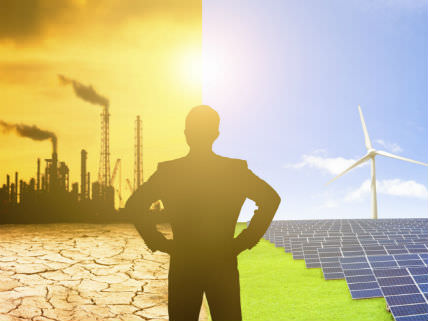Obama's Clean Power Plan Would Reduce Global Warming by -0.015 Degree By 2100
A lot of pain for what gain?

HuffPostLast week, the Environmental Protection Agency released the final regulations implementing President Barack Obama's Clean Power Plan (CPP). The CPP aims to cut U.S. carbon dioxide emissions from electric power generation by 32 percent by 2030. That would amount to cutting carbon dioxide emissions by 871 million tons per year below what was emitted in 2005. Of course, the goal of keeping carbon dioxide out of the atmosphere is to reduce future warming. It is thus relevant to ask, just how much warming will the president's Clean Power Plan avert? The answer is, not much.
For example, American Enterprise Institute environmental and energy policy analyst Benjamin Zycher finds:
EPA itself uses the MAGICC/SCENGEN model developed at the National Center for Atmospheric Research. So: Let's apply that model not just to the clean power plan, but to the broader climate action plan, which envisions a 17 percent reduction in U.S. greenhouse gas emissions below 2005 levels by 2020. The temperature reduction in the year 2100: fifteen one-thousandths of a degree. The effect would be too small even to be measured, let alone to affect sea levels and cyclones and all the rest.Climatologists Patrick Michaels and Paul Knappenberger over at the free-market Cato Institute similarly report:
The EPA’s own policy analysis model, called MAGICC*, tells us how much global warming will be prevented by the new plan: 0.019°C by the year 2100 (based on procedures similar to those we detailed here). That’s the amount of temperature change a person will experience in about every second of life. It is simply impossible to detect this change in any global temperature history.Over at the Washington Post, columnist Robert Samuelson has a good article analyzing the manifold difficulties involved with reducing carbon dioxide emissions. From his column:
Even that is an overestimate of the actual impact of the plan. The EPA has also published a “base case” which includes emissions reductions expected from existing state and federal regulations. The difference between the plan and the base—i.e., the future temperature savings directly attributable it drops to 0.009°C—let’s be generous and call that 0.01°C.
We need more candor on global warming. Obama’s plan is a big deal for electric utilities and, if it goes awry, potentially for millions of households. The plan is complicated. States receive emissions goals and can meet the goals through various policies (energy efficiencies, a cap-and-trade program, a carbon tax, more natural gas generation, preferences for wind and solar). Love it or hate it, the plan still contributes to higher carbon dioxide concentrations. It may be worth doing; we may learn valuable lessons. But it’s no panacea.Given this reality, Samuelson notes that a lot of the harm that might be caused by future climate change will be averted if (1) the temperature trends projected in cimate models turn out to be overstated, or (2) technological breakthroughs liberate economic growth from fossil fuels.
Similar considerations apply globally. In 2010, major countries adopted a goal of limiting the worldwide temperature increase to below 2 degrees Celsius (or slightly below 4 degrees Fahrenheit) from the preindustrial period. The International Energy Agency in Paris recently estimated that meeting this goal would, in effect, require all fossil fuel emissions to be eliminated by 2040. Needless to say, this isn’t going to happen. As the agency has noted, countries’ policies “fall short of the action necessary to meet the 2 [degrees] C climate goal.”
I will modestly mention that I extensively analyze both issues in my new book, The End of Doom: Environmental Renewal in the Twenty-first Century. I point out that the models are running hotter than actual temperatures and discuss the really hopeful developments in non-fossil fuel energy production.

No comments:
Post a Comment